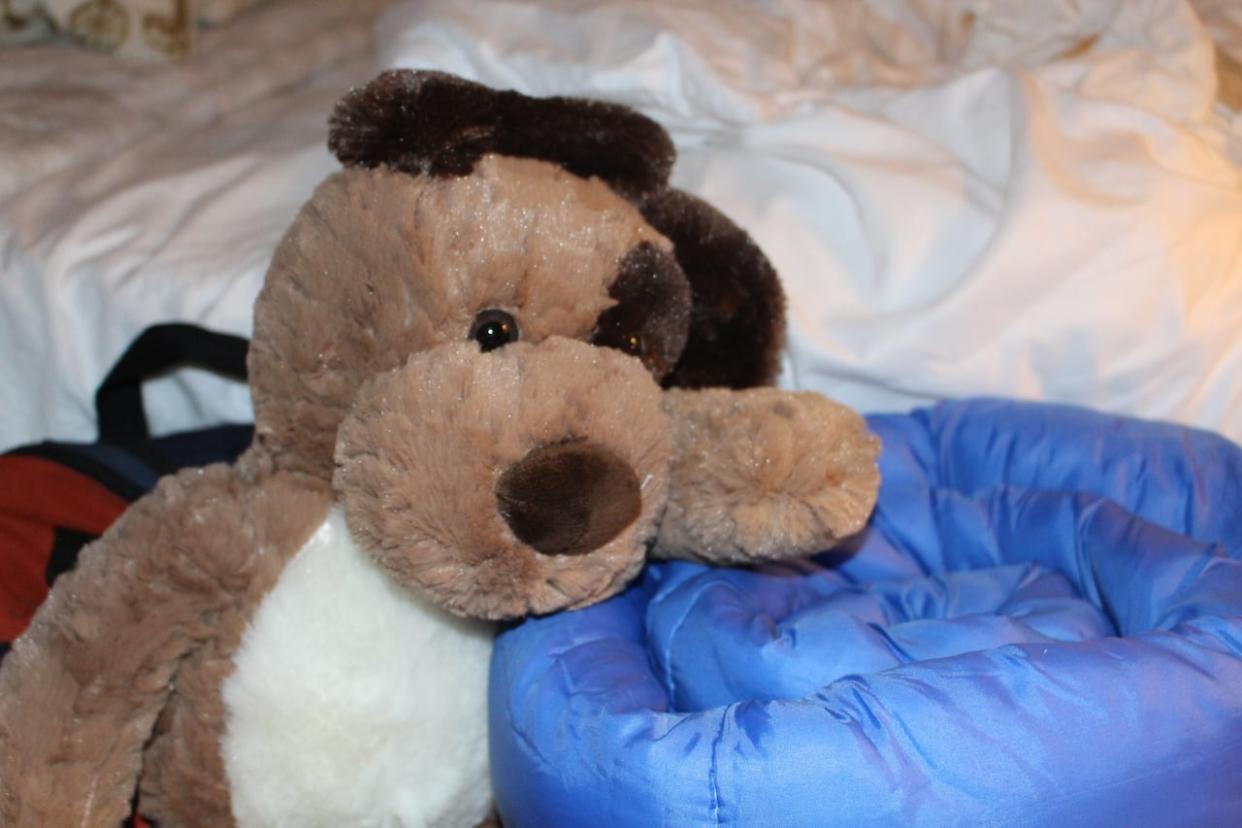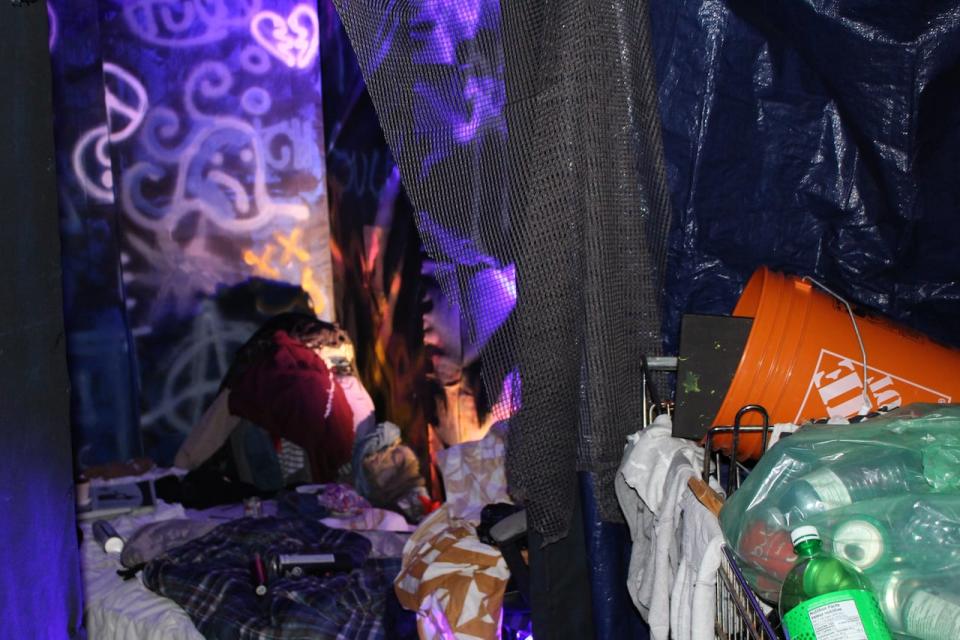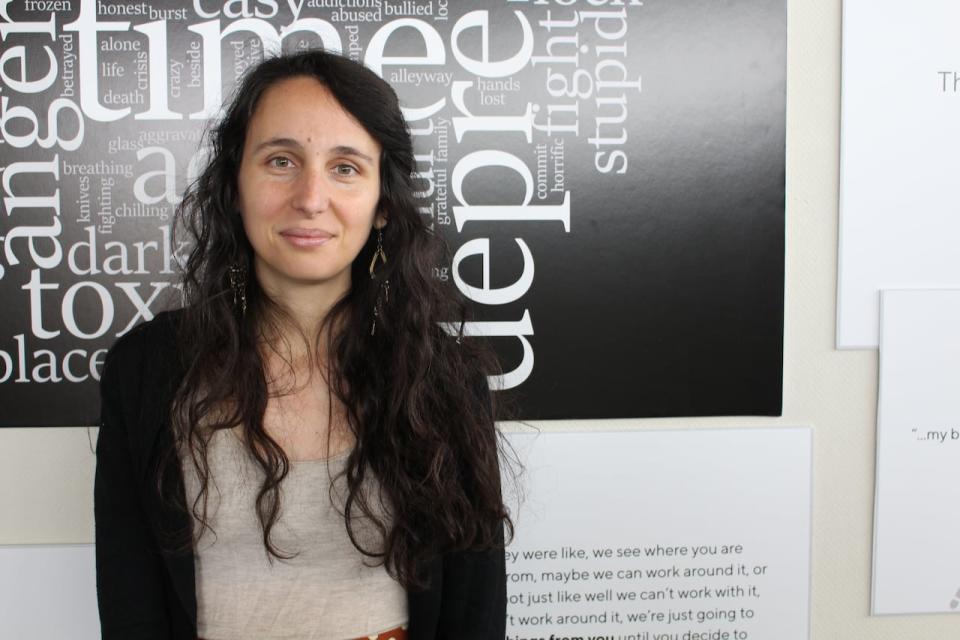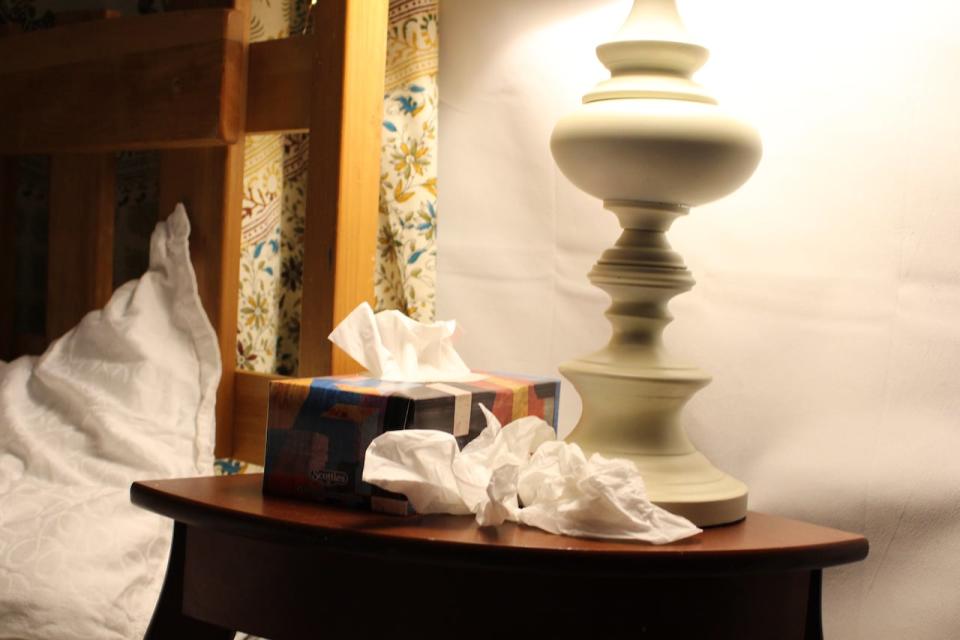Powerful art exhibit explores experiences of homeless youth in New Brunswick

An interactive art installation at the Beaverbrook Art Gallery in Fredericton explores the importance of having unconditional housing available for young people.
Walking through the door into the first part of the installation, scattered backpacks, a tent and school supplies lead the way into a room big enough for a mattress and a pile of clothes, graffiti on it walls.
The sounds of kids' voices echo through the space.
Another room, a mock social workers' office, has posters on the wall, client notes on the desk and a voicemail menu for the Department of Social Development playing aloud on a loop.

The first room in the installation has a tent, a grocery cart filled with recyclables and a pile of backpacks. These items lead into a small room with a mattress and piles of clothes. (Hannah Rudderham/CBC)
For the visitor, finding the door into the next room is difficult.
Project lead Cassandra Monette said the disorientation of the installation was purposeful.
"That was an intentional part of the design, to really represent that cyclical nature that is very easy to get stuck in and to get lost in where you're constantly trying to find a better solution for yourself," she said.
"And you end up back into situations that you don't want to be — in unsafe situations."

A child's bicycle leaning against a tree next to a tent encampment. (Hannah Rudderham/CBC)
Called Building Home, the exhibit began in Saint John as part of an evaluation of a youth pilot project and through conversations with young people who had spent time in precarious housing situations.
Monette, who is also the youth engagement and research specialist at the Teen Resource Centre in Saint John, said the pilot project was a "housing first for youth model."

Cassandra Monette, project lead, said the art installation included heavy involvement from the youth who shared their experiences. (Hannah Rudderham/CBC)
She said this means that it treats housing as a right, rather than something that comes with conditions, such as being enrolled in education, seeking employment or being in a substance-use program.
For the installation, 16 one-on-one interviews were conducted with young people and then, through the creation process of the installation, about 22 young people helped to shape the themes and pieces in the various rooms, said Monette.

Used tissues are piled on a nightstand while an audio loop provokes a lingering feeling of worry. (Hannah Rudderham/CBC)
Continuing the walk through, behind the curtain to the next room, there is a seemingly safe bedroom. But used tissues on the nightstand and a looping audio communicate feeling of being unsettled and unsafe, and perhaps undeserving.
Monette said this was a common theme in conversations with the participating youth.
"It's not just about life before housing and life after housing," she said.
"They urged us to get rid of that dichotomy and to really look at it as a housing journey as a whole and that once you attain housing, that sense of relief, and that sense of pride for your home is amazing, but it doesn't erase all of the experiences that have been accumulated up until that point."

Charles Harding, a sound artist, said his experience on the project was one of 'deep listening.' (Hannah Rudderham/CBC)
The installation was funded by a grant through the Canada Mortgage and Housing Corporation, which allowed the team to bring on three artists.
Fredericton-based Charles Harding, the sound artist for the project, said he took the sounds collected by researchers, youth and caseworkers to create a soundscape for each room.
Harding said he had a key takeaway from his experience on the project.
"Make sure that what you experience or what you're perceiving in the world around you is actually what's really happening," he said.

A journal is left open on a bed in the final room of the art installation. Despite the room representing a steady home, the words on the paper express fear and a feeling of being undeserving, a sentiment that Monette said was common among participants. (Hannah Rudderham/CBC)
"This experience for me was an experience of deep listening, you know, as it goes with learning about the narratives and experiences of these youth, and it was very, very powerful."
Monette said she hopes after people see the installation, it will create more awareness around youth homelessness, a demographic that she says is often left out of provincial conversations around housing.
After its run at the Beaverbrook, the installation will go back to Saint John for a stint from May 15-17 in the old museum space in Market Square.

 Yahoo News
Yahoo News 
